For us to watch is a delight – it is all about survival for the birds.
Every winter, thousands of cranes, geese, and ducks fly south to stay along the Rio Grande. During the day, after feeding on Rio Grande grain, the birds fly to the safety of wetland roosting sites for the night. At dawn, the birds take flight in large flocks and return to the grain fields. These spectacular morning “fly-outs” and evening “fly-ins” may seem like impressive displays to us, but to the birds, they are all about survival.
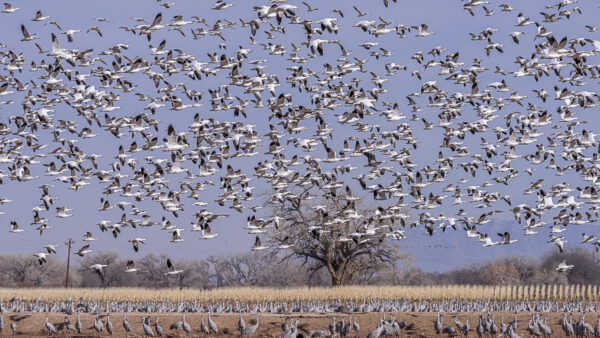
Birds fear predators hiding in tall corn fields, so the refuge knocks over corn with a tractor. This way, the birds feel safe to enter the field and feed. The timing and amount of corn that is knocked over are determined by the number of birds and the availability of other food on the refuge.
The National Wildlife Refuges in New Mexico are doing outstanding work. The employees there are knowledgeable and friendly. It is truly a treasure. We must support them.
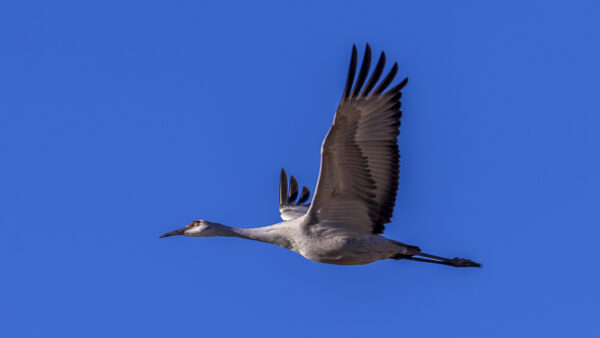
Being at the National Wildlife Refuge is a special event.
All you need are a pair of good binoculars or a good camera with a long tele lens.
I spent hours there until dusk. That is the time when the birds “fly in.” Listening to the orchestra of bird sounds is incredible. Before night falls, they all move into the water for protection.
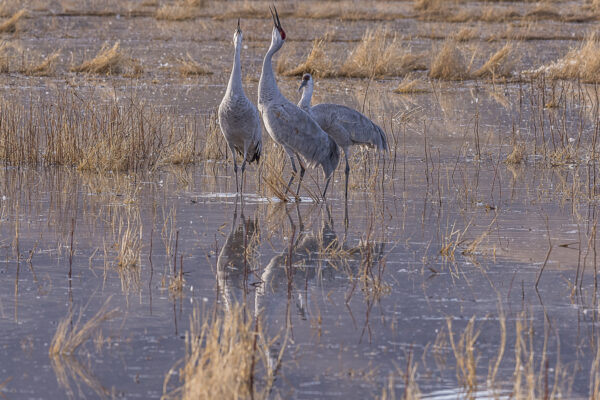
After having dinner with a glass of wine, I went to sleep early to get up at 5:30 to return to the bird’s resting place before dawn. At once, and without announcement, all the birds take flight. It’s amazing.
The whole experience is excellent for your soul. You are around those beautiful birds, hear their sounds, and see them flying quietly and elegantly, landing like an airplane or airplanes landing like birds. With binoculars or camera, you are right in the middle of it.
As soon as spring arrives, they will fly back north. Not until the next winter will they return, where we ensure they survive the cold winter, even in New Mexico. The morning I headed out, it was a refreshing -10C / 14F.
See you next time? All you have to bring are binoculars, a lot of time, no phone and a big heart to watch those beautiful birds.
[caption id="attachment_9217" align="alignnone" width="600"]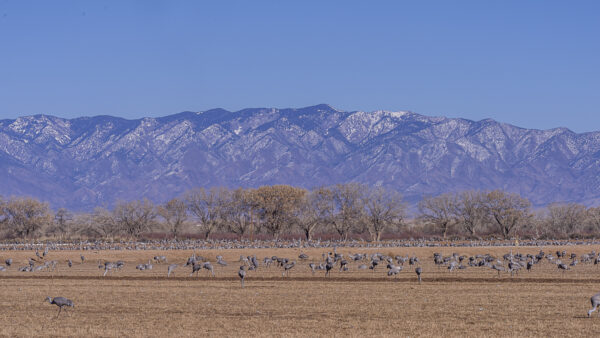 Everything is quiet. The cranes are busy in the corn field.[/caption]
Everything is quiet. The cranes are busy in the corn field.[/caption]
[caption id="attachment_9220" align="alignnone" width="600"]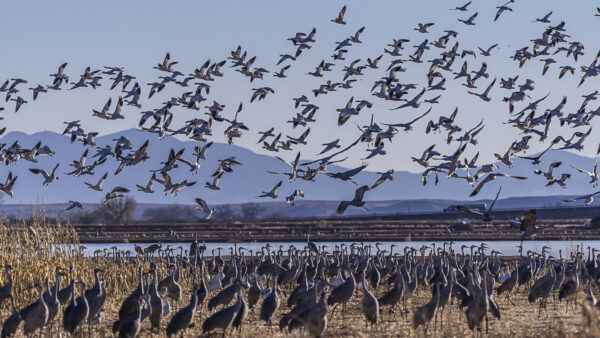 Geese are suddenly approaching the corn field.[/caption]
Geese are suddenly approaching the corn field.[/caption]
[caption id="attachment_9223" align="alignnone" width="600"]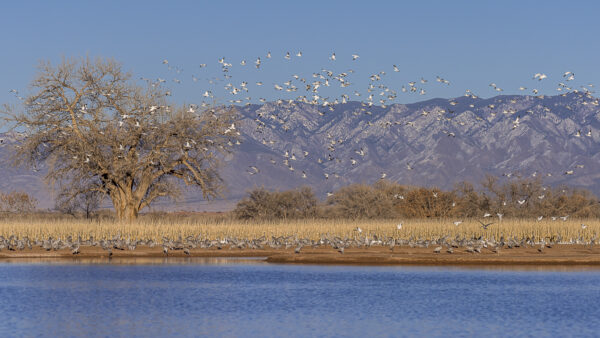 It is just a wonderful picture to watch them flying in circles, back and force.[/caption]
It is just a wonderful picture to watch them flying in circles, back and force.[/caption]
[caption id="attachment_9219" align="alignnone" width="600"] How elegant is this?[/caption]
How elegant is this?[/caption]
[caption id="attachment_9224" align="alignnone" width="600"]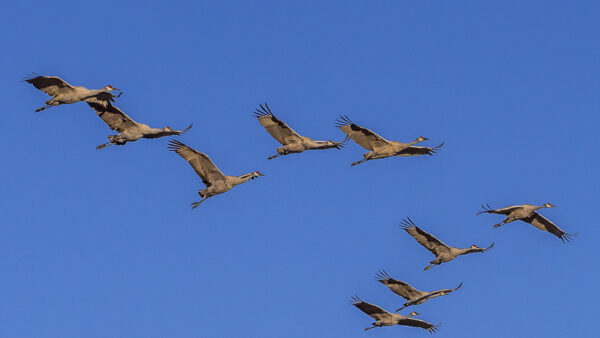 They fly in formation and all at the same speed.[/caption]
They fly in formation and all at the same speed.[/caption]
[caption id="attachment_9218" align="alignnone" width="600"]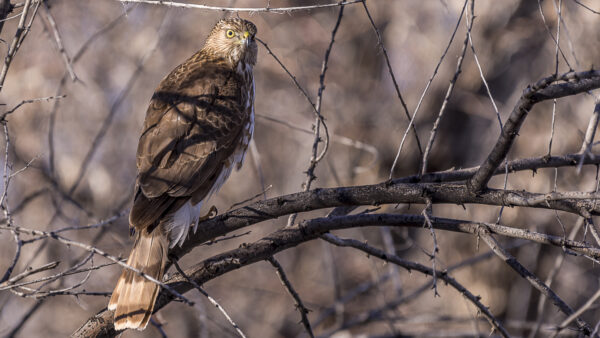 This hawk blends nicely into the surroundings. Sitting there, watching what is going on until they see their prey.[/caption]
This hawk blends nicely into the surroundings. Sitting there, watching what is going on until they see their prey.[/caption]
[caption id="attachment_9216" align="alignnone" width="600"]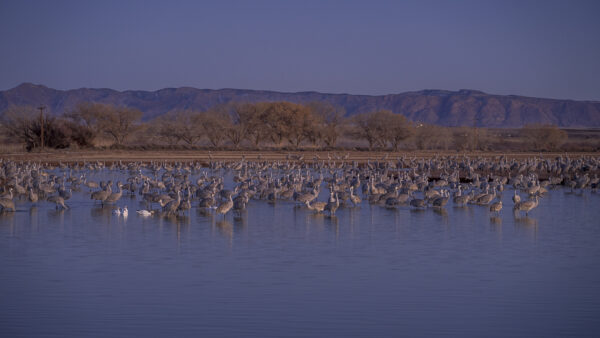 It is getting dark, the sun is down, and the birds walk into the water for protection during the night.[/caption]
It is getting dark, the sun is down, and the birds walk into the water for protection during the night.[/caption]
[caption id="attachment_9215" align="alignnone" width="600"]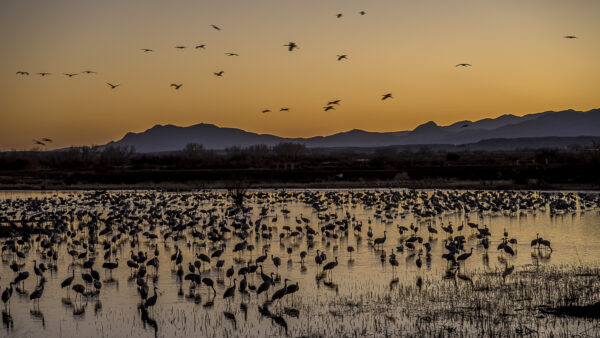 Evening atmosphere in the wildlife refuge.[/caption]
Evening atmosphere in the wildlife refuge.[/caption]
[caption id="attachment_9229" align="alignnone" width="600"]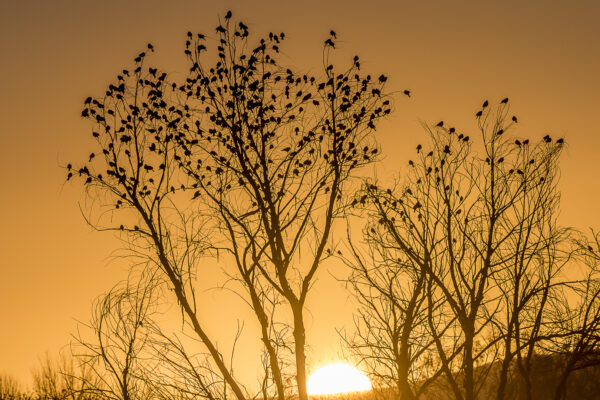 The early morning sun paints the landscape in gold.[/caption]
The early morning sun paints the landscape in gold.[/caption]
[caption id="attachment_9222" align="alignnone" width="600"]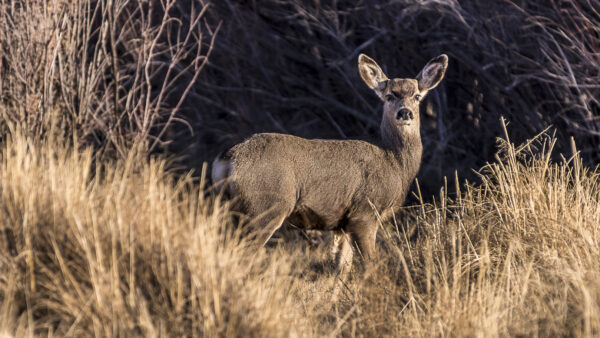 … surprised to see me …. do I look that scary?[/caption]
… surprised to see me …. do I look that scary?[/caption]
[caption id="attachment_9226" align="alignnone" width="600"]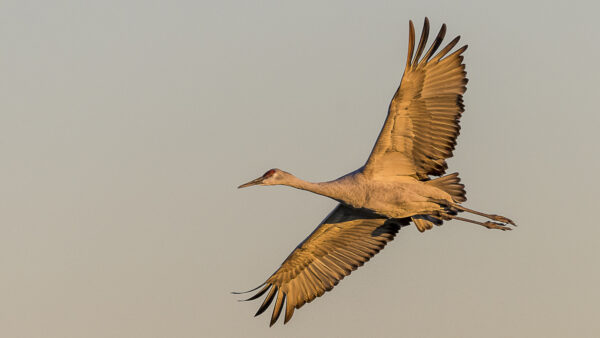 Let’s see which cornfield looks best for today.[/caption]
Let’s see which cornfield looks best for today.[/caption]
[caption id="attachment_9232" align="alignnone" width="600"]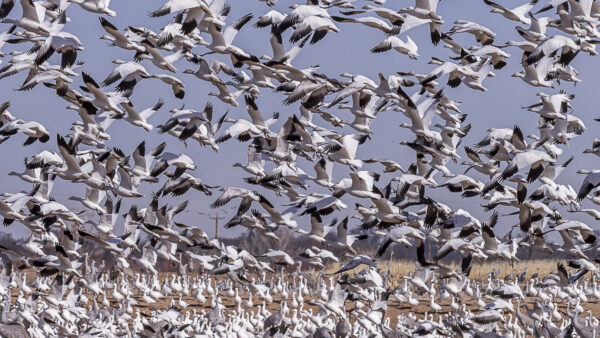 Have you ever wondered how they can be so close and don’t collide? To do this, they call each other to let other birds know where they are; a collision of wings flapping at a high rate could break one or both birds’ wings, causing them to fall out of the sky to almost certain death.[/caption]
Have you ever wondered how they can be so close and don’t collide? To do this, they call each other to let other birds know where they are; a collision of wings flapping at a high rate could break one or both birds’ wings, causing them to fall out of the sky to almost certain death.[/caption]
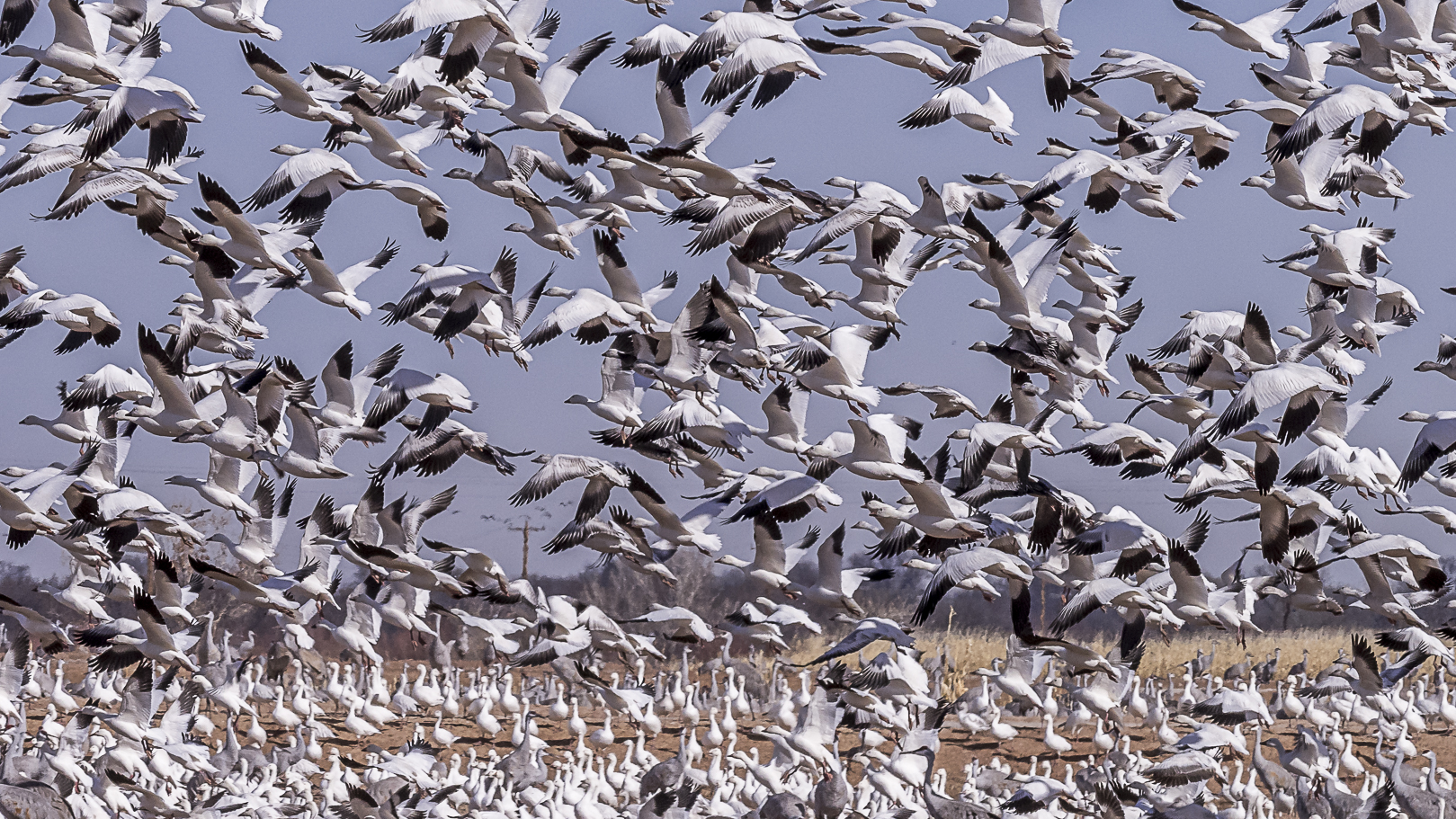
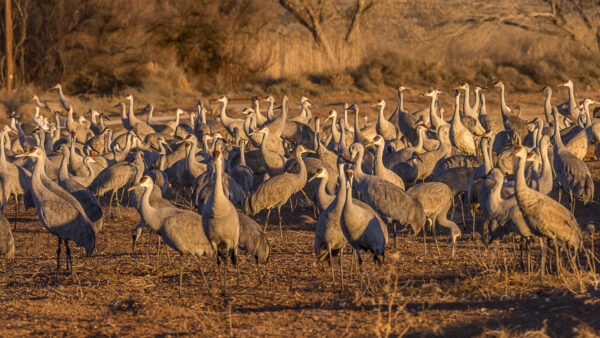
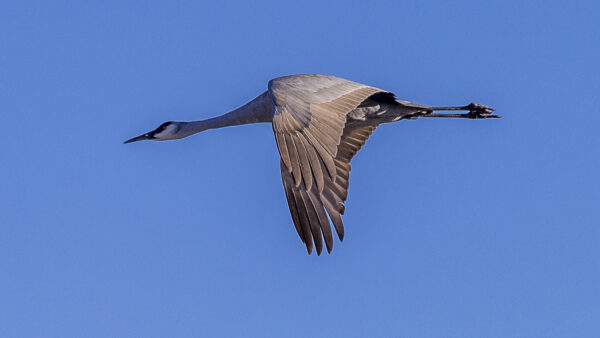
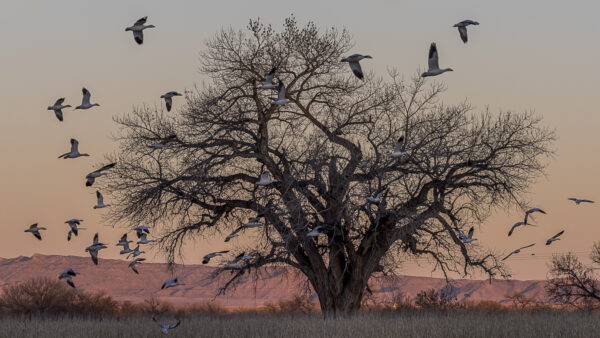
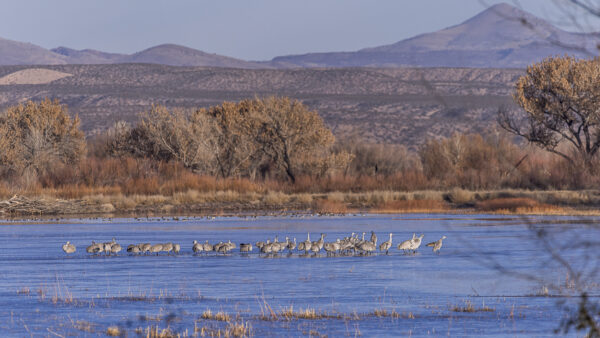
12 Comments